Start Date: 15 September 2025
End Date: 17 September 2025
Location: Creative School, Freedom Land, Bengaluru
The BhāratShakti team was invited to curate and conduct a 3-day intensive workshop for about 350 students (ages 10-18) on the theme – “Kala, Sanskriti evam Sadhana’. This workshop is part of an ongoing learning initiative for children and youth titled ‘Invoking Shakti’ developed by the BhāratShakti team, and is one of the several activities going on under a larger collaboration emerging between The Creative School, a unit of The Healing Circle, Bengaluru and BhāratShakti, Sri Aurobindo Society.
Last year, a workshop was conducted from September 24, 2024 to September 27, 2024 under the title ‘Invoking Shakti: Cultivating Courage, Faith and Concentration’ at the same venue. In 2023, we did a workshop from October 9, 2023 to October 12, 2023 under the title ‘Invoking Shakti: Workshop on ‘The Divine Feminine in Indian Culture’ at the two campuses of The Creative School. See HERE for the various works we have been doing with the school for the past several years.
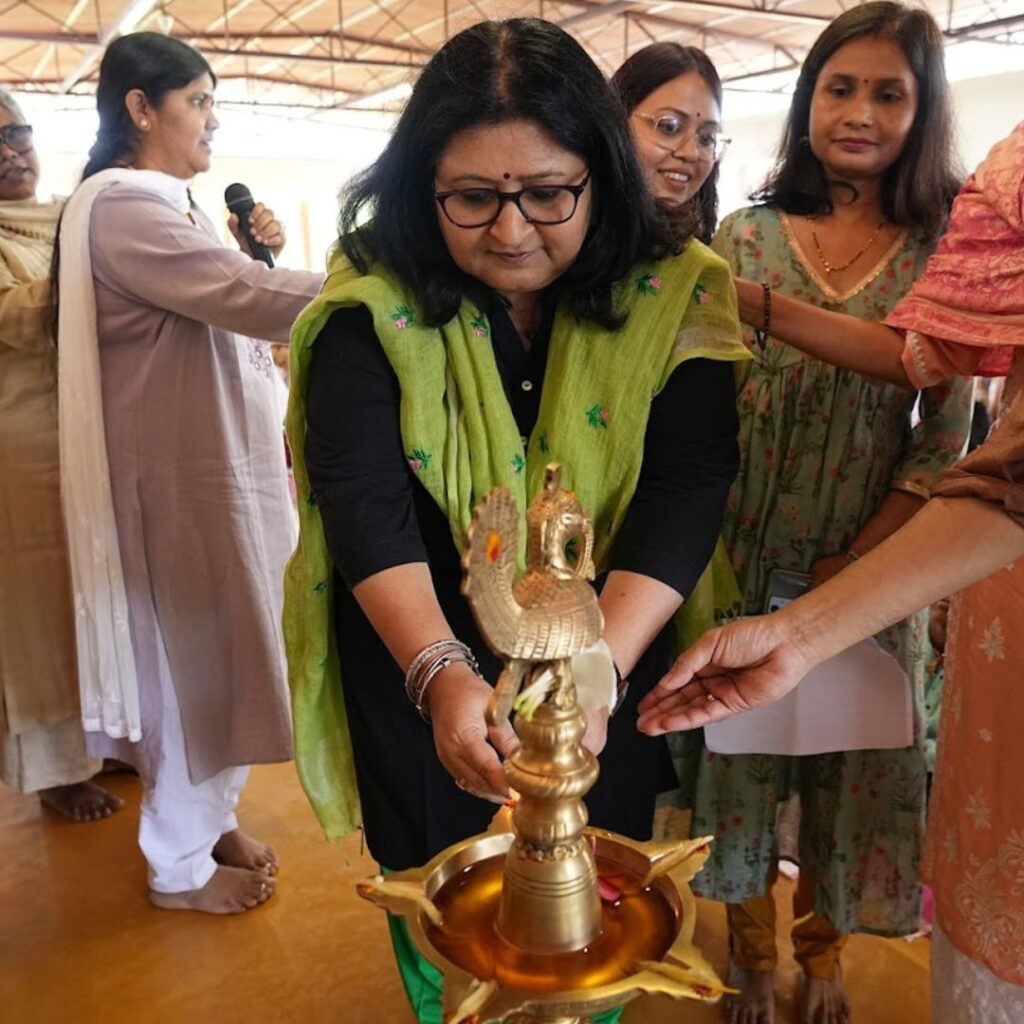
This year the workshop focus was on providing an experiential understanding to the students of selected aspects of the spirit and forms of Indian art, aesthetics and art appreciation. The planning work for the workshop included developing and designing a range of age-appropriate learning activities for different groups of students. These activities included: storytelling sessions, visually appealing presentations and video content for interactive sessions, chanting sessions, crafts activities, practice sessions, poster exhibitions, exercises and games, cultural activities, and more.

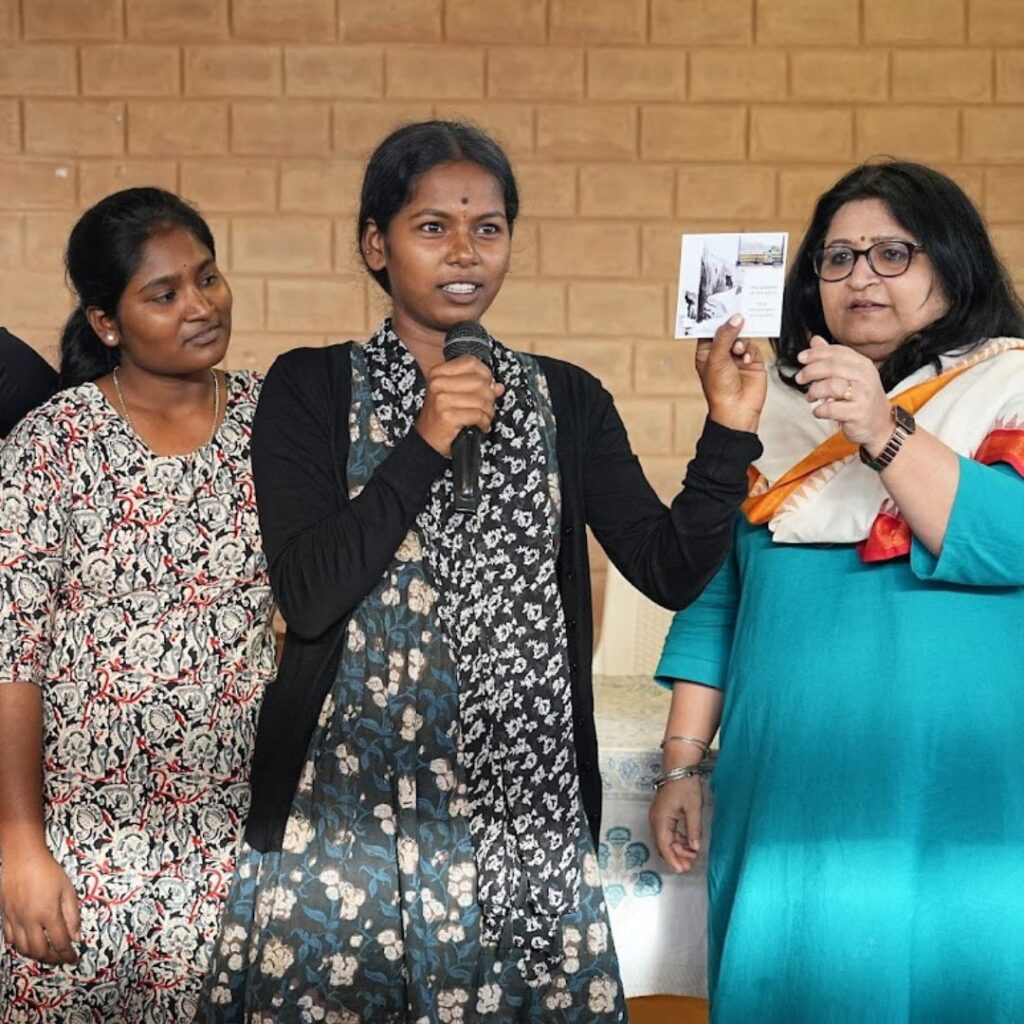
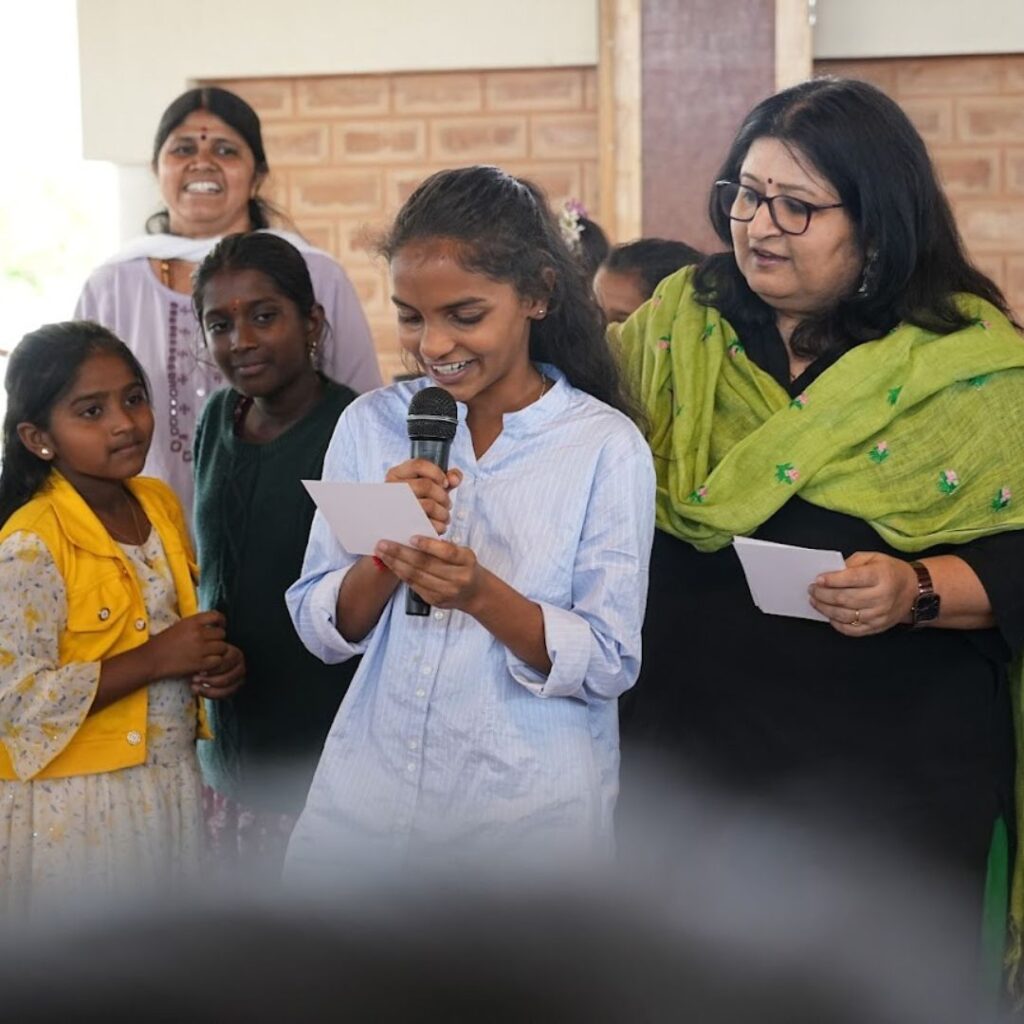
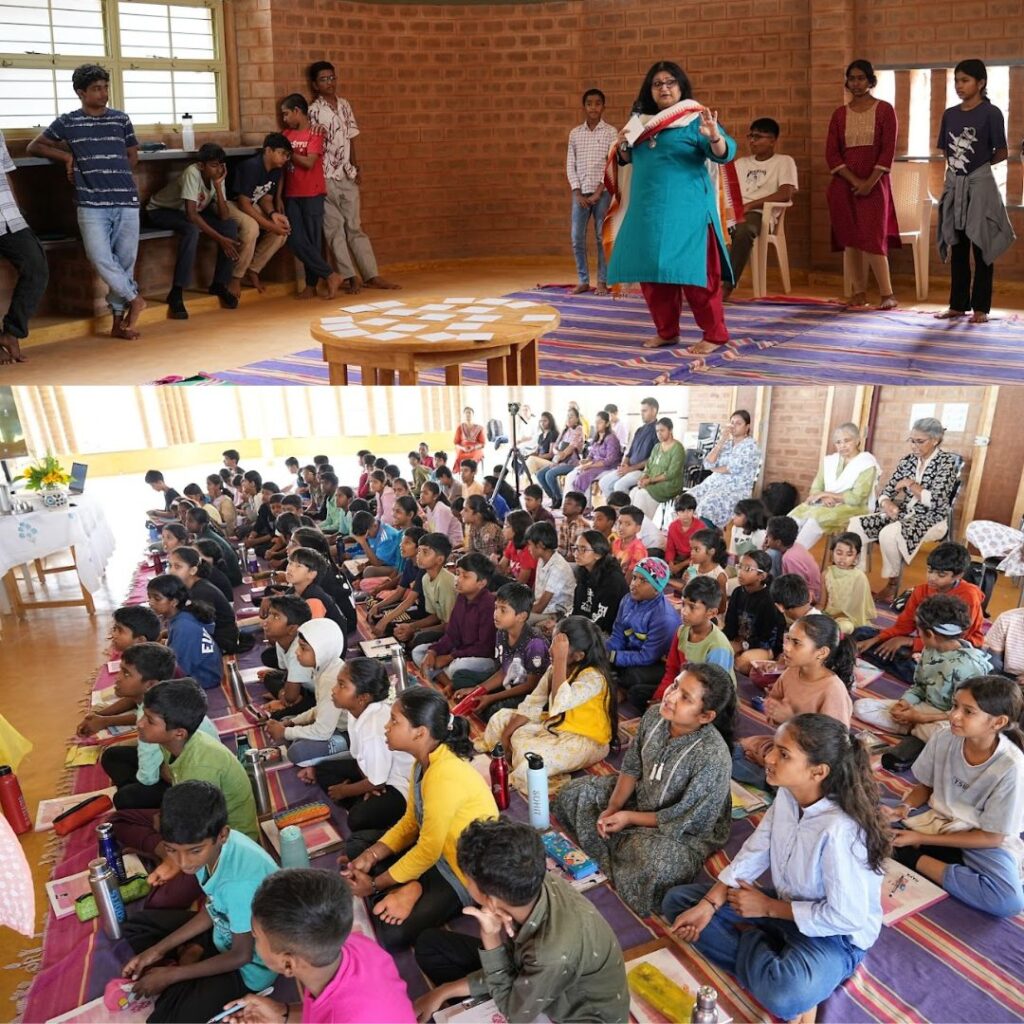
The workshop planning and organization team from BhāratShakti comprised of Dr. Beloo Mehra, Director; Ms. Biswajita Mohapatra, Research Assistant; Ms. Runalika Roy and Ms. Bindu Popli, Volunteer Resource Persons. The team intensively worked on a number of details for the workshop, in discussions with Ms. Jayashree Ashok, co-founder of the Creative School and several members of her team. Research and design work for exhibitions related to the workshop theme as well as other collaborative projects with the Creative School also happened over a period of two months before the workshop.
The following sessions covering a range of topics were organised in parallel with smaller groups of children so as to be more inclusive.
- Introduction to 64 Arts – storytelling, visually engaging presentations and interactions
- Basics of Navarasa – learning through experiential activities and short performances
- Know India through Art — fun learning through flash cards and storytelling
- Introduction to Natyashastra – storytelling, visually engaging presentations and interactions
- Preserving our Heritage – interactive sessions with short films
- Appreciating Ajanta and Ellora – short films followed by discussions, storytelling, Q & A
- Influence of Ajanta murals on modern Indian painting – interactions and visually engaging presentation
- Art and Craft workshop inspired by Ajanta – experiential activities
- Art as Sadhana – interaction and experiential activity
Much time was spent prior to the workshop designing the flash cards to be used for various sessions, keeping in consideration the age-groups of the students and yet making sure that some of the learning opportunities would be slightly challenging for them so as to inspire curiousity. Three sets of flash cards – ages 10-13, 14-16 and 17-19 were designed by Dr. Beloo Mehra and Ms. Biswajita Mohapatra.
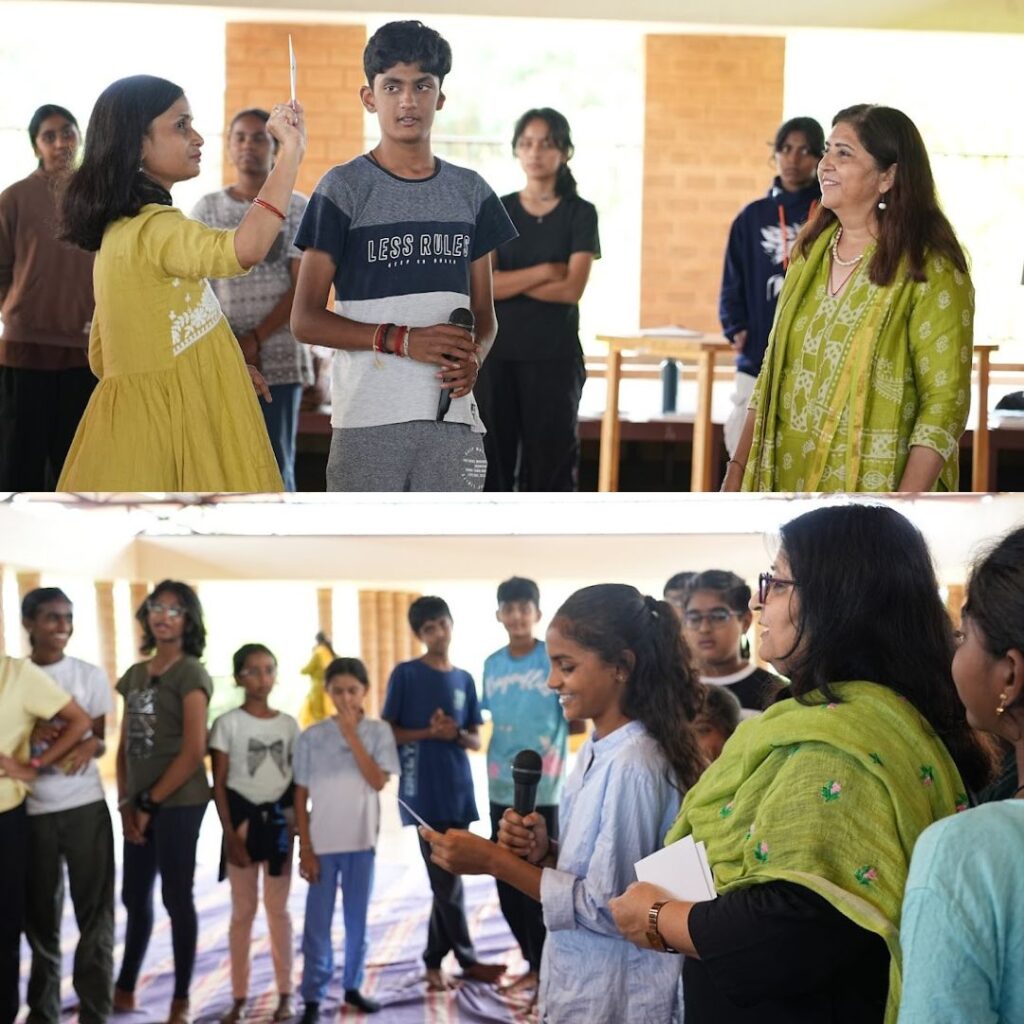
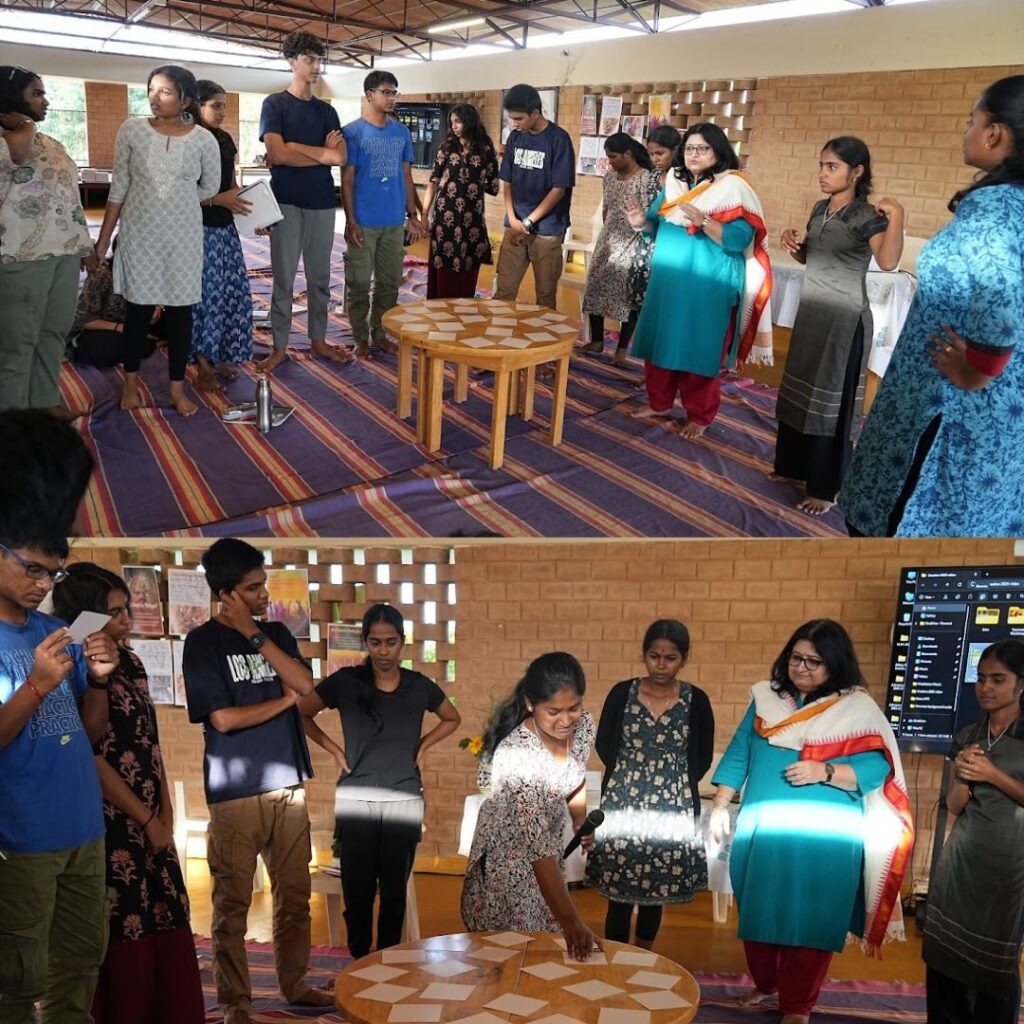
These flash cards introduced the students to the diversity of Indian art forms, including topics such as navarasa, 64 arts, preservation of cultural heritage, rich sculptural arts, temple architecture, diversity of painting traditions, appreciation of weaving and needlework, and many other topics related to Indian art. The other volunteer resource persons were trained to use these flash cards via phone conferences and also before the start of the workshop at the venue.
Dr. Mehra also designed visually engaging presentations for several of the sessions including some details about Natyashastra, Navaras, training and discipline of artsits, and 64 Arts. Much thought went into selecting appropriate images. These images were used to illustrate the stories related to the divine origin of all art forms in India. The students found the story of divine origin of Natya or drama highly engaging, and much time was spent on exploring the psychological understanding of this story.
Dr. Mehra also identified a few engaging films related to Ajanta and Ellora. These films not only informed the students of what is unique about these places, but also about some of the ongoing restoration work especially concerning Ajanta murals. During the follow-up discussion, Dr. Mehra highlighted some specific facts and other interesting details about these wonders of India.
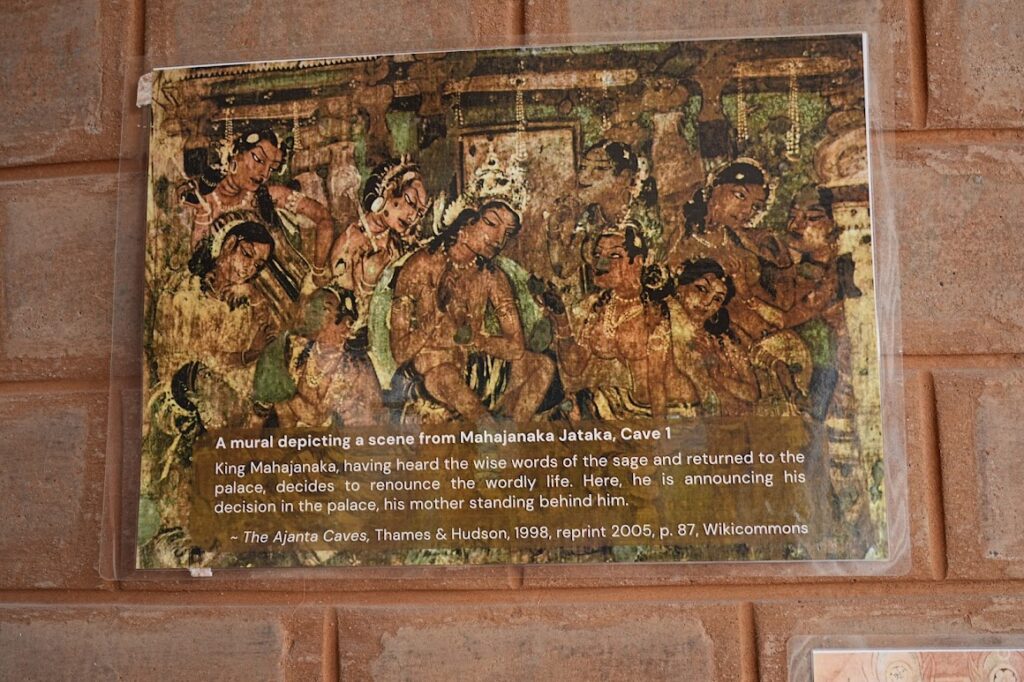
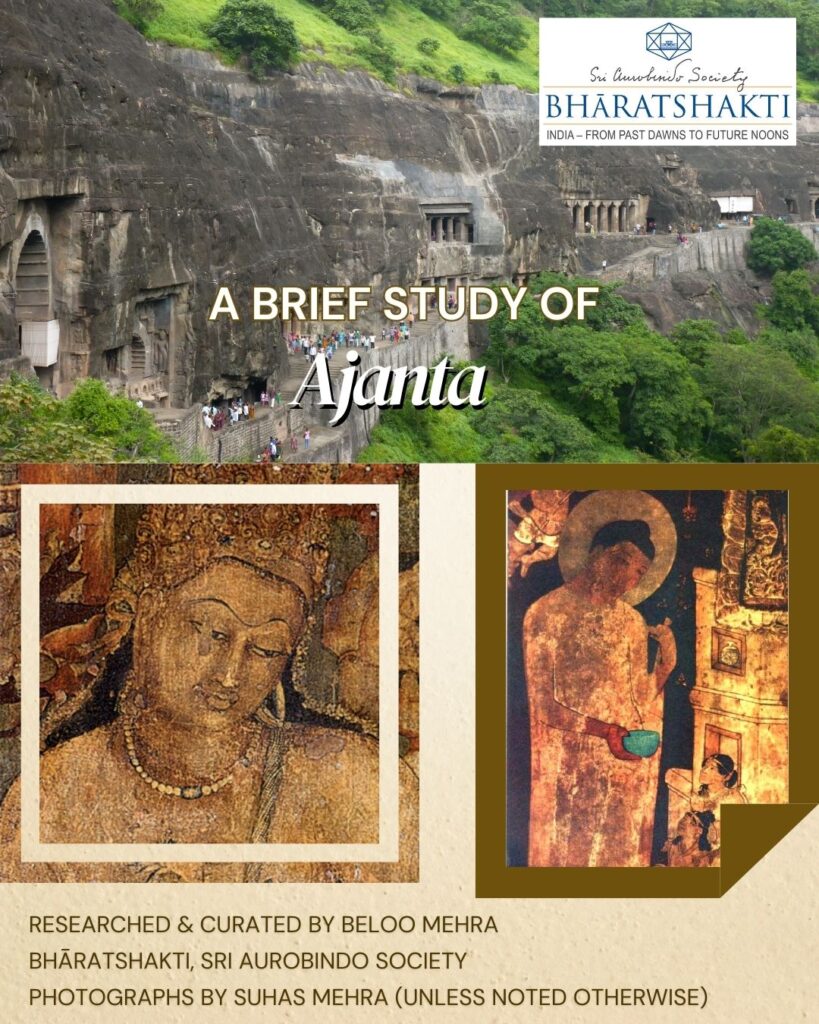
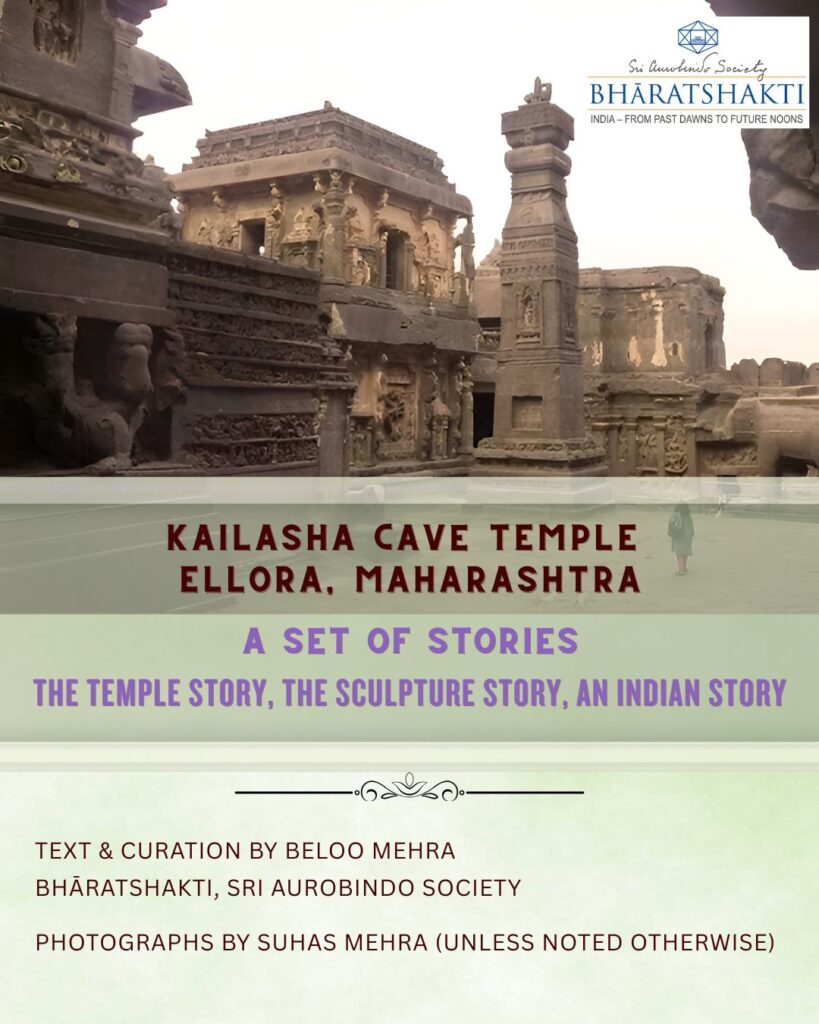
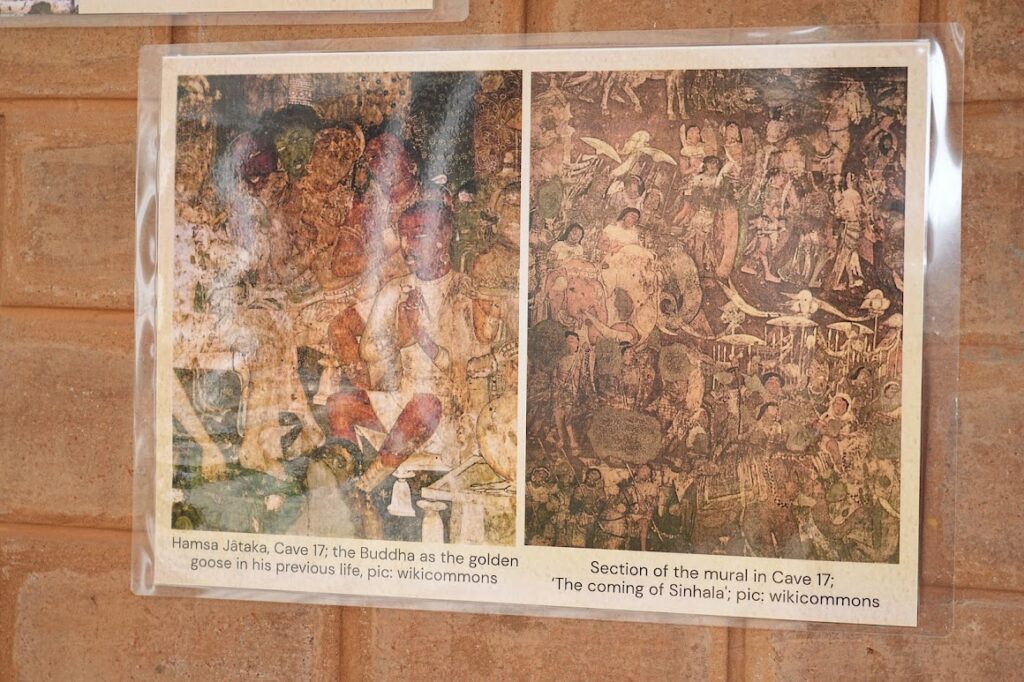
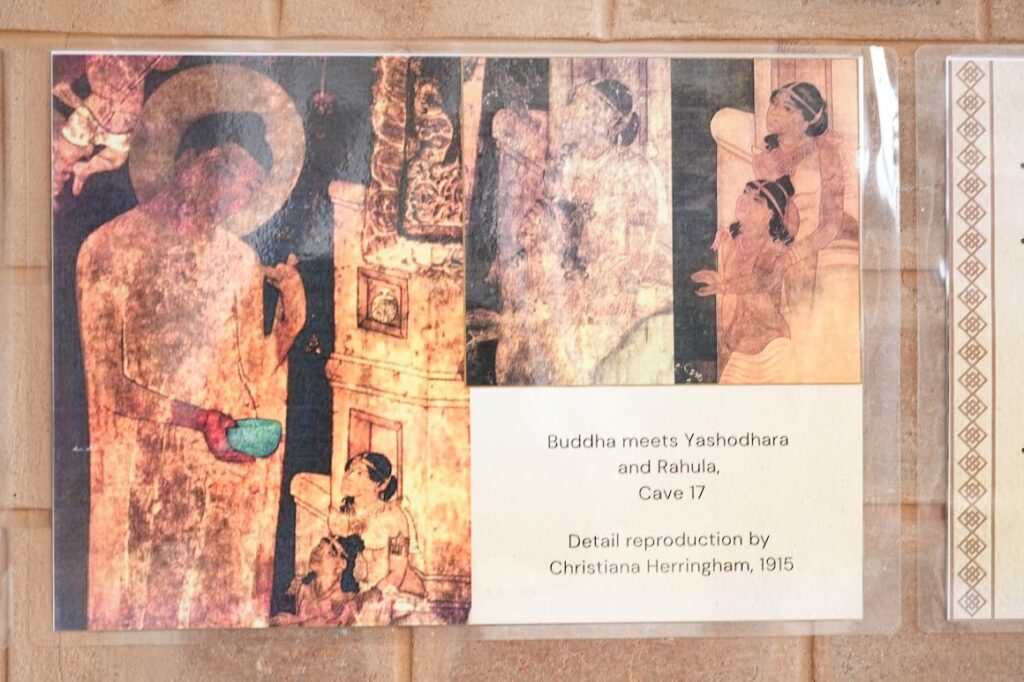
She shared a few engaging stories concerning the excavations of these cave temples and monasteries and also some of the remarkable sculptural works and murals seen there. This part of the workshop was designed to give students a thorough orientation for their upcoming field trip to Ajanta and Ellora. The students found the documentaries highly engaging and brought up lots of interesting questions during the follow-up discussion.
One group of children worked with Ms. Runalika Roy on the synthesis of value of gratitude with Navarasa. She had prepared a thoughtful presentation about the same and then engaged the students on an activity around developing a deeper emotional awareness through Navarasa. This interactive session also emphasized the idea of aesthetic sensibility and creativity as means for self-development.

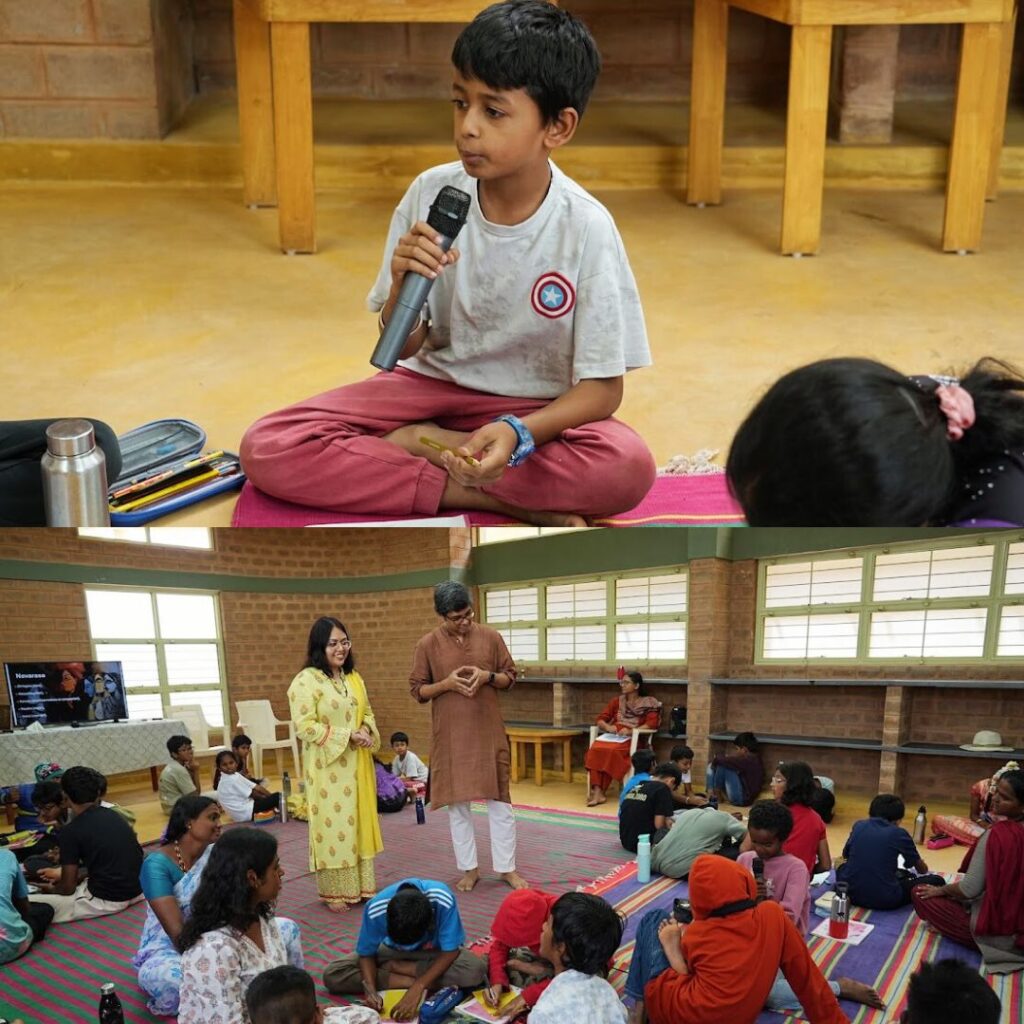
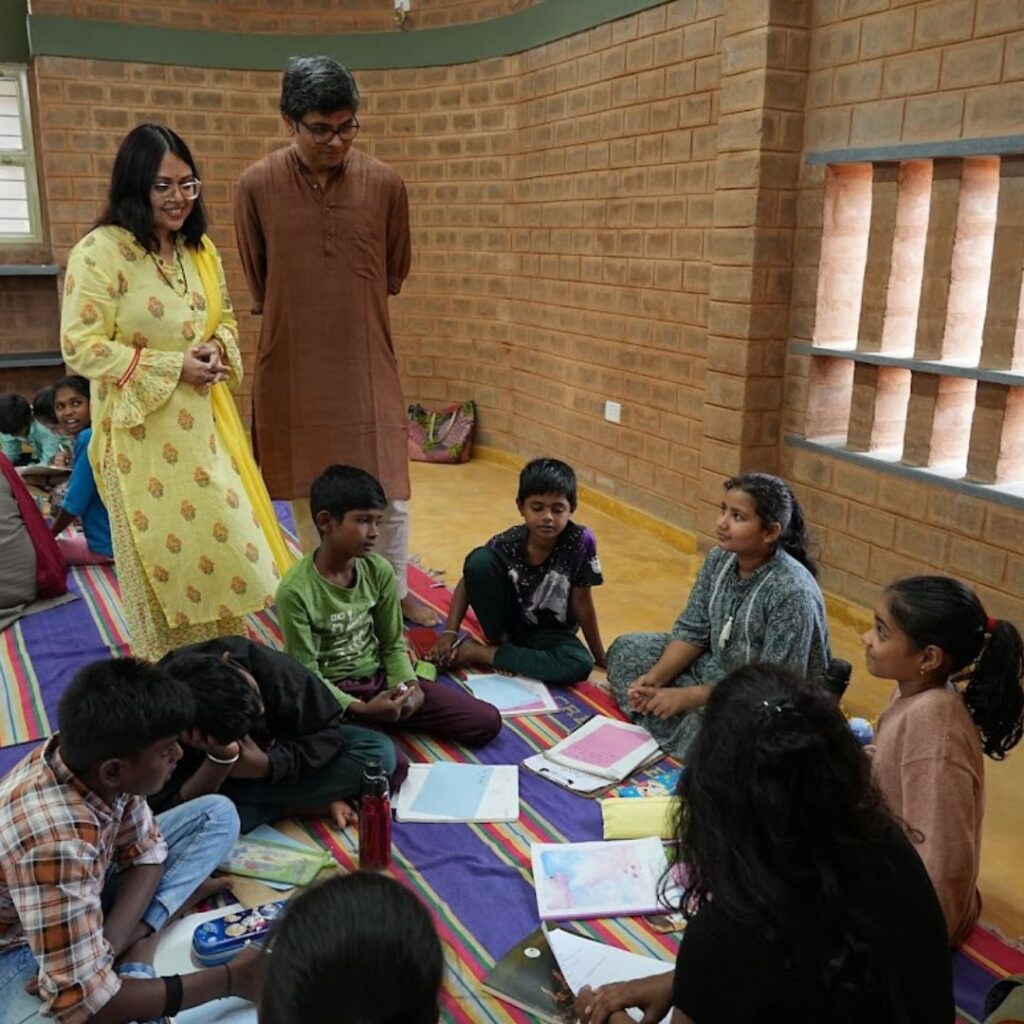
Ms. Biswajita Mohapatra worked with another group of students with the theme of Navarasa and helped them practice short skits on different rasas. She had prepared short scripts which children practiced and then gave their performance on one of the evening gatherings at the school. Children had a great time learning about Navarasa through this experiential activity. With Ms. Mohapatra’s guidance a small group of students also practiced and gave a short performance on the nine forms of Durga – as a way to mark the festival of Navaratri. These activities were included to help students develop an appreciation of the performing arts tradition of Indian culture.
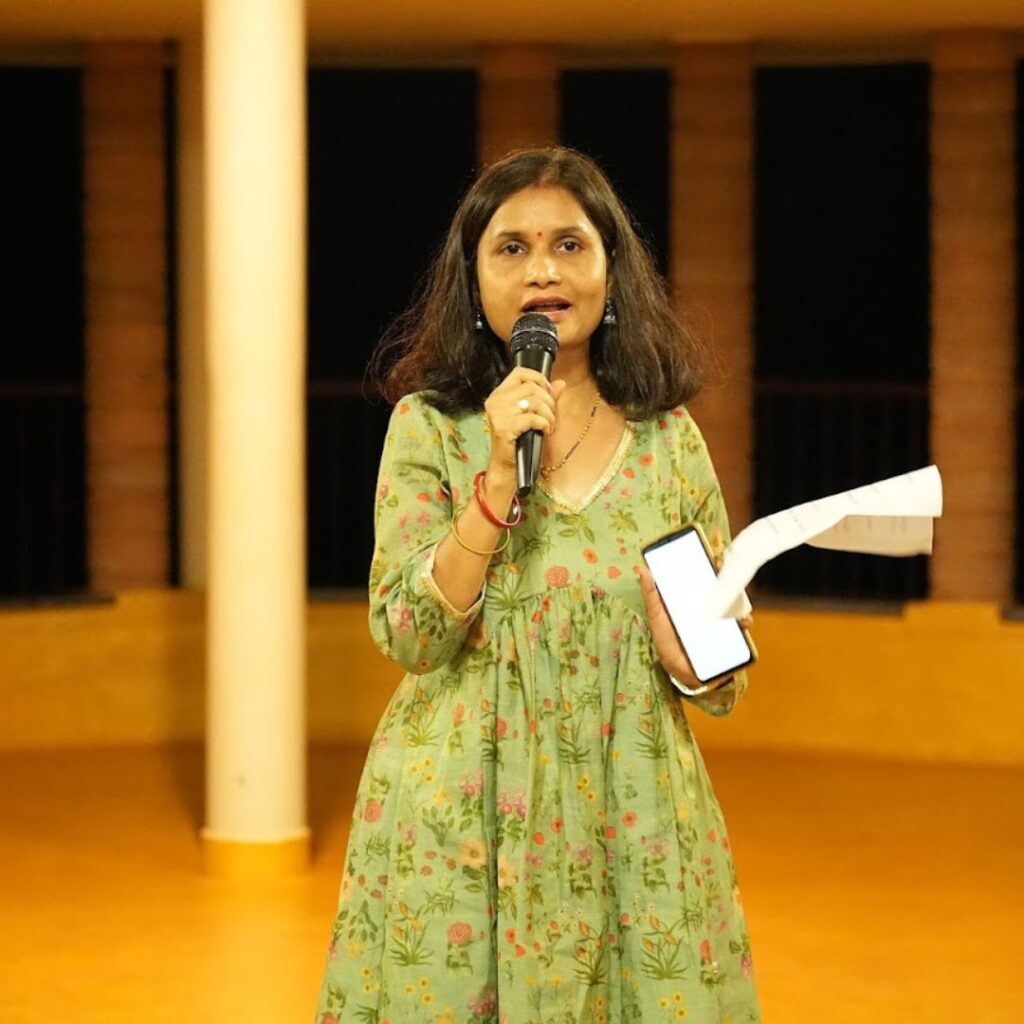
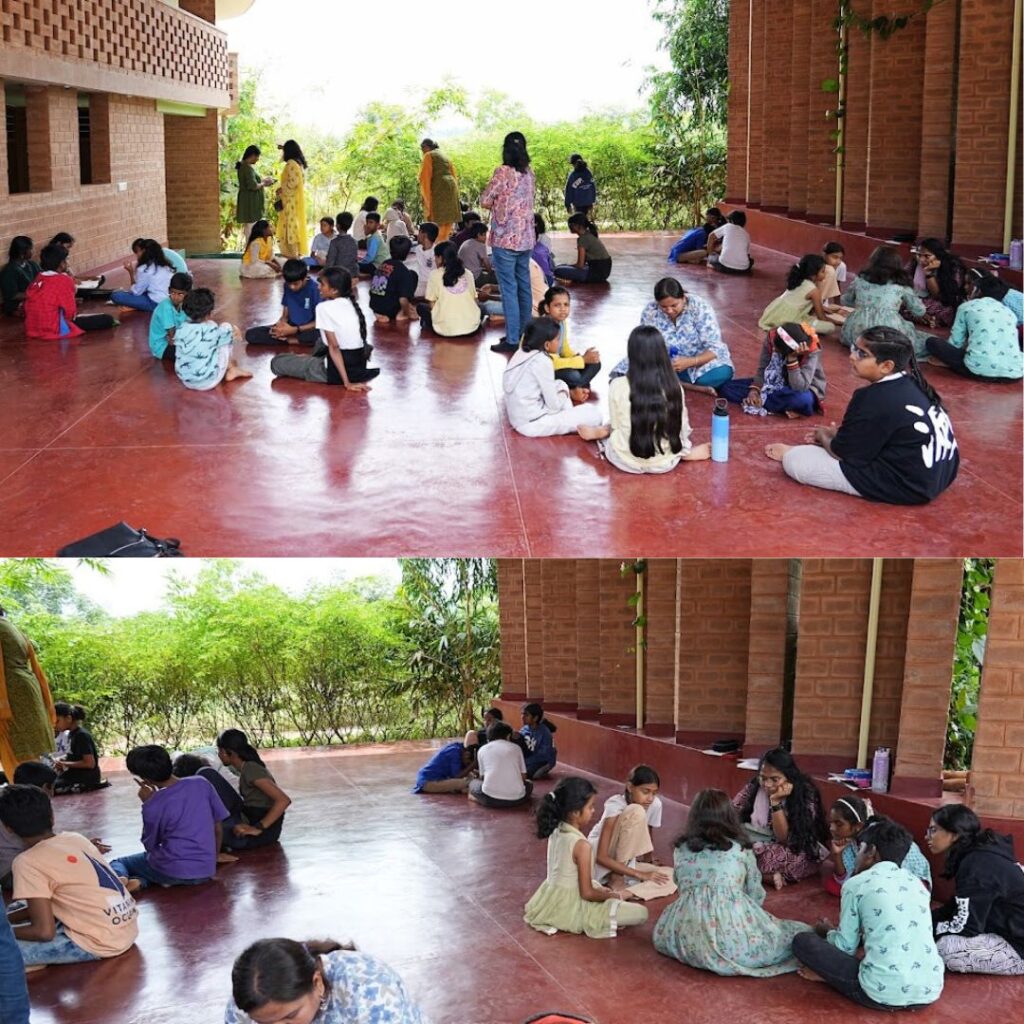
Students also got a chance to interact with Ms. Bindu Popli, an artist and art teacher, who has participated in some of the Insightful Conversations series at BhāratShakti. Ms. Popli spoke about how her painting has been influenced by what she saw at Ajanta and what that experience meant for her in her journey as an artist. She also spoke about the idea of taking up Art as one’s sadhana and showed some of her artworks through small video presentations.
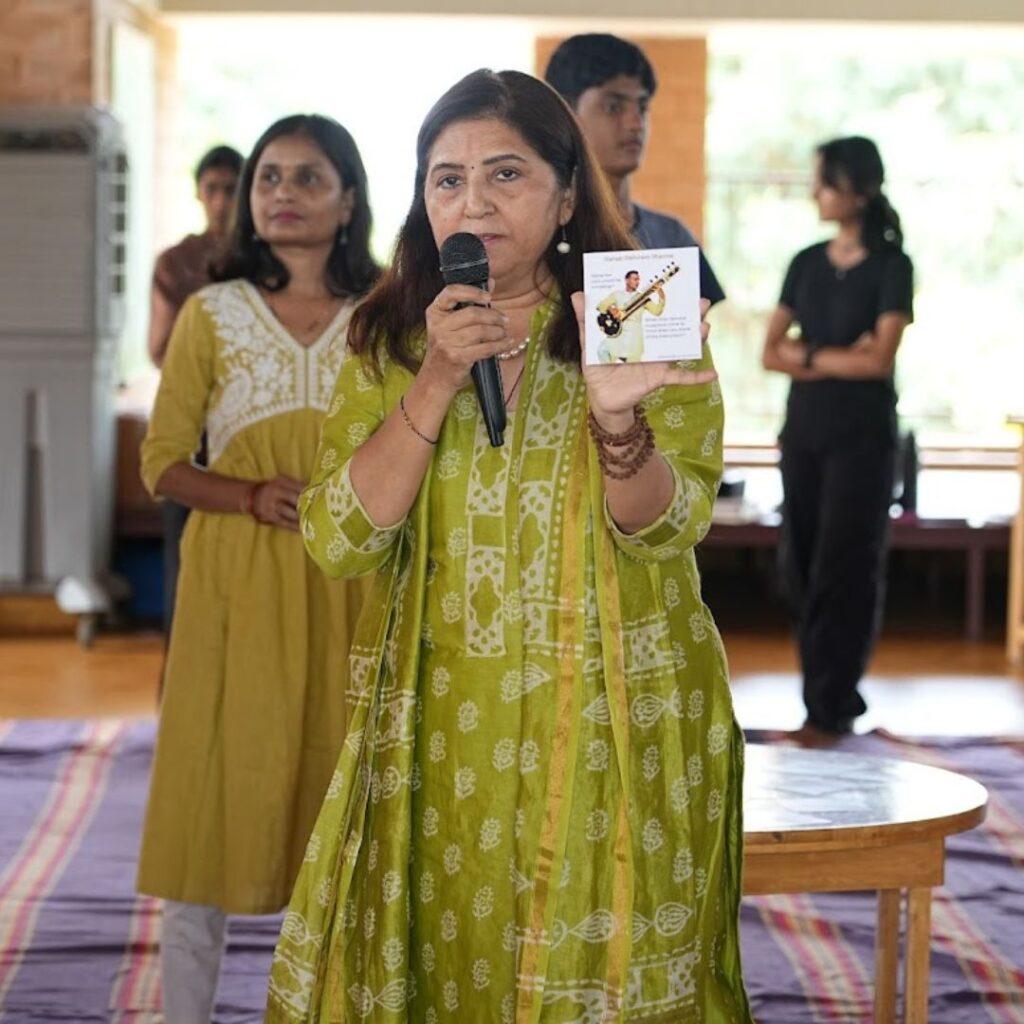
Students also got an opportunity to work with Ms. Popli in an Ajanta inspired Art and Craft Workshop on the last day. Ms. Popli had brought a few samples of such work and explained the different activities students could choose from. This included appreciating architectural details of Ajanta caves, colouring and drawing inspired by Ajanta sculptures and murals, block printing inspired by motifs commonly seen in Ajanta murals, preparing short Tie and Dye fabric samples, as well as using jute fabric and clay to create some forms of Buddha. Students enjoyed participating in these sessions and created beautiful works of art which were displayed in one of the halls at the school.

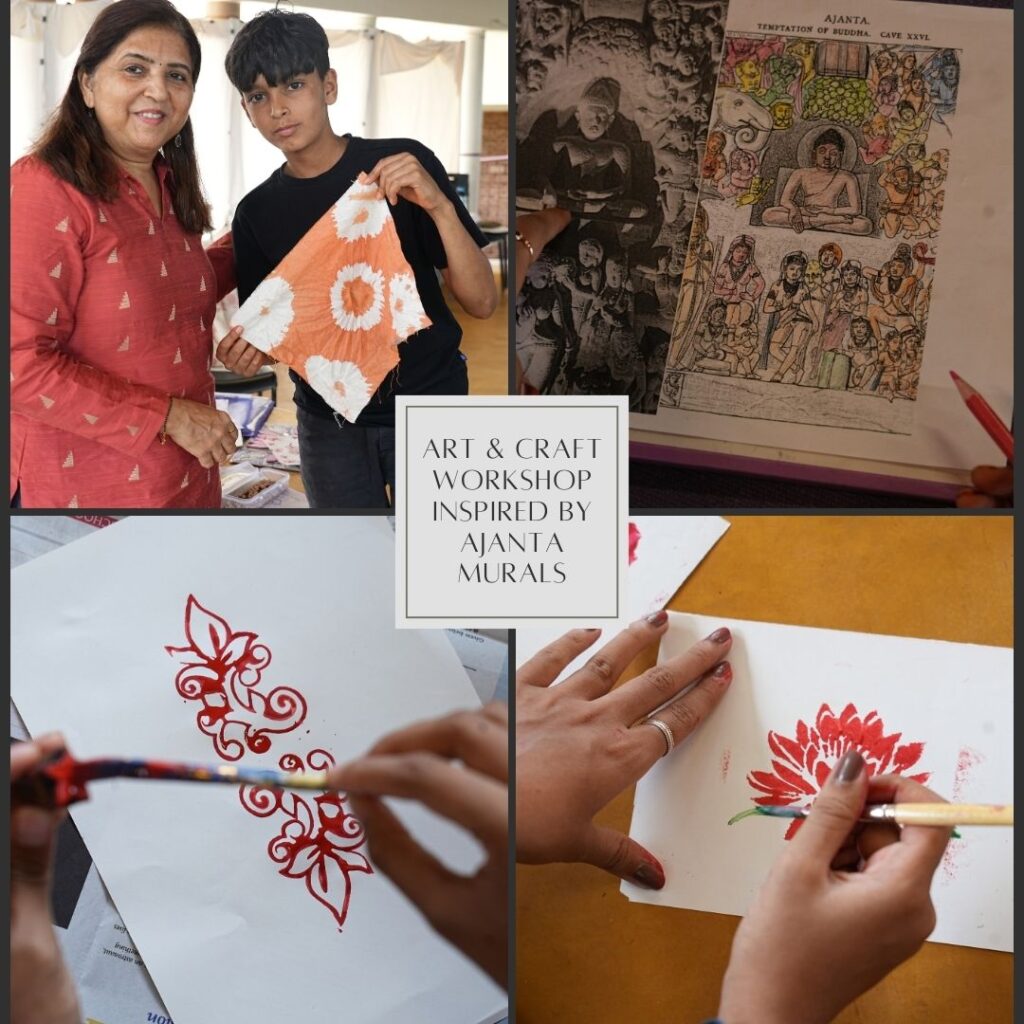
The workshop concluded with a late evening session during which several students shared their key take-aways from the 3-day intensive immersion into the world of Indian Arts. Many of them shared how their appreciation of Indian art has immensely increased as a result of their participation in the workshop. Some spoke of how proud they felt at the awareness that in Indian culture, art and aesthetic development of the being have been given such central position. Some students said that they were now very curious to experience the wonders that await for them at Ajanta and Ellora during their upcoming field trips. A few students found the understanding of Navarasa very helpful.
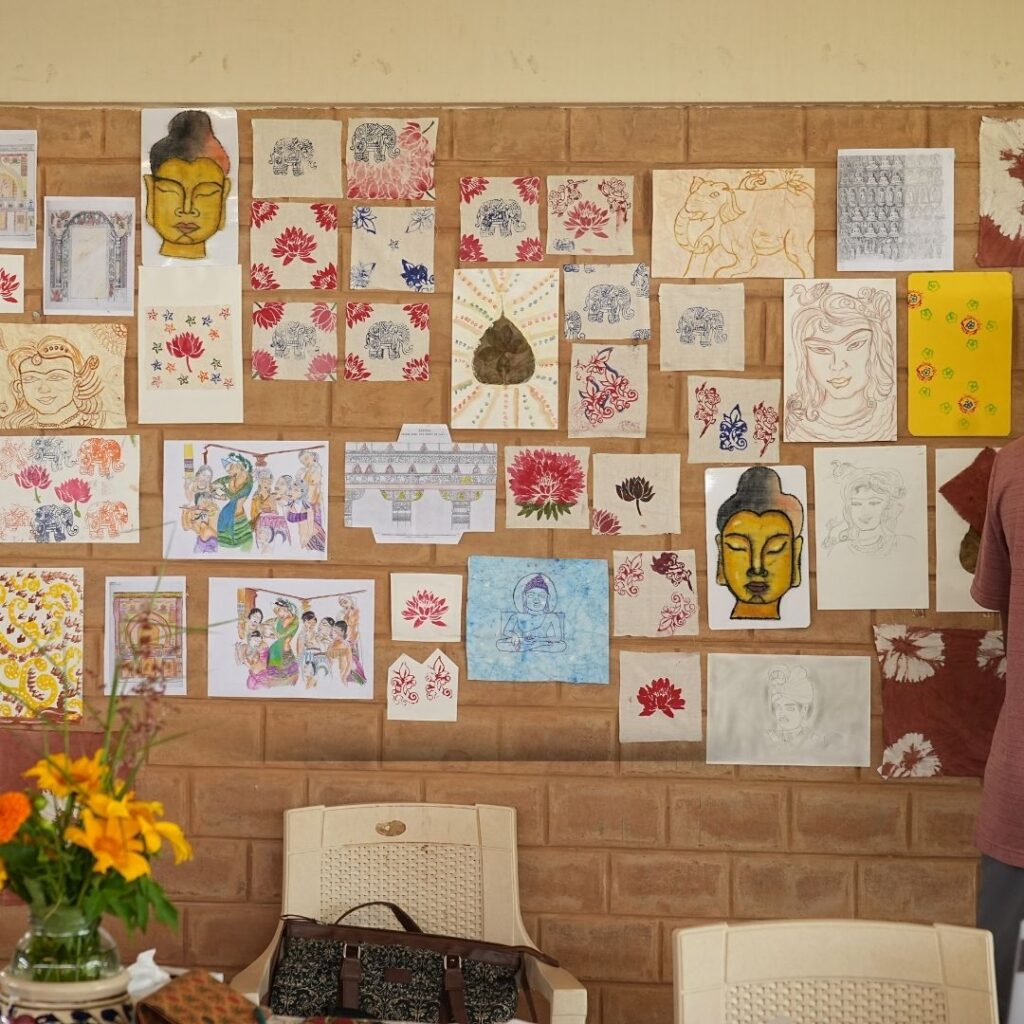
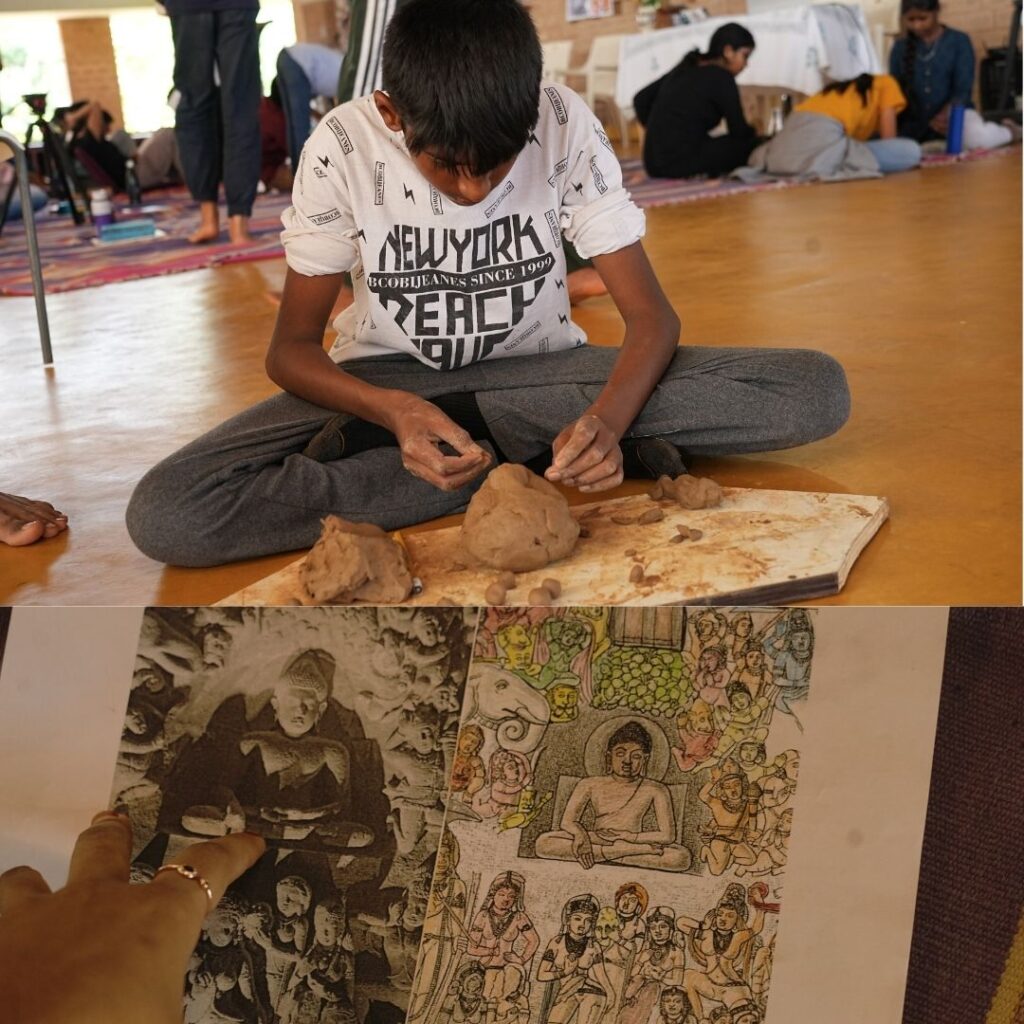
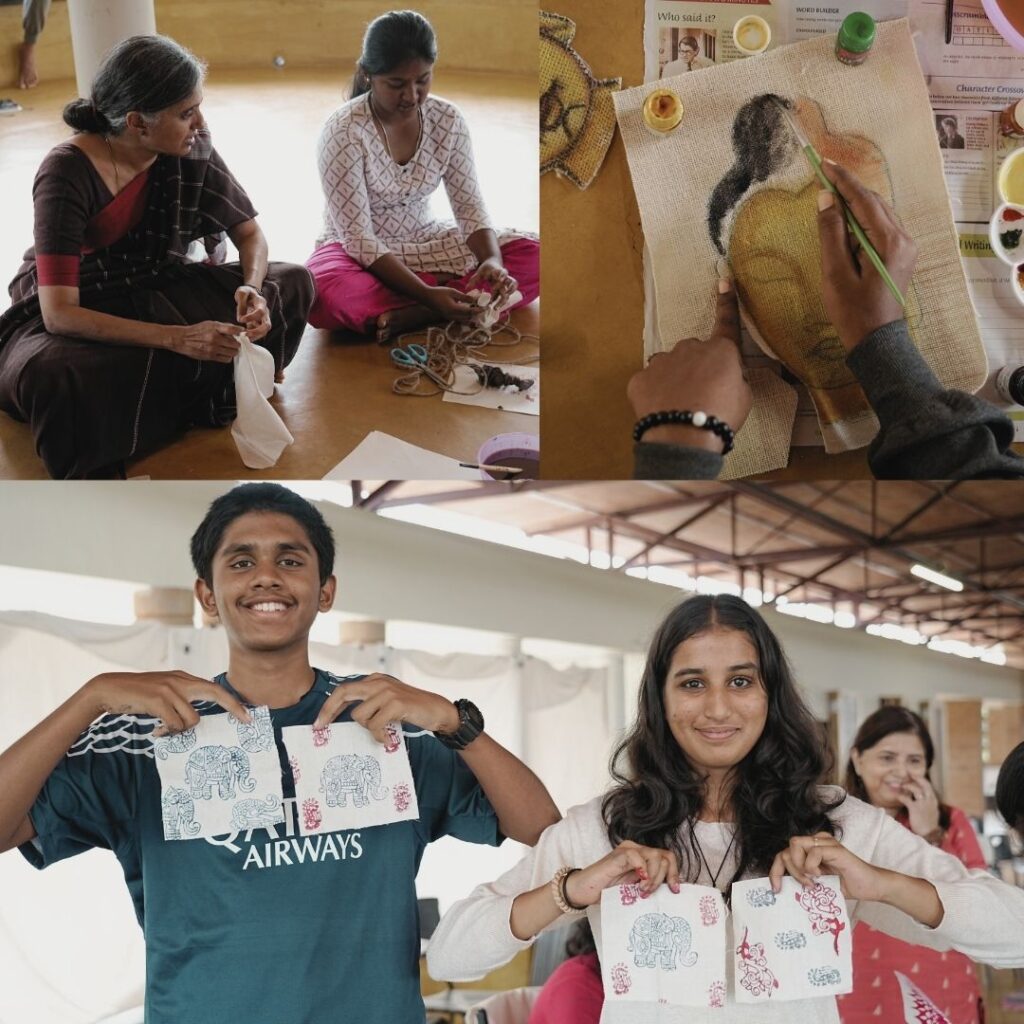
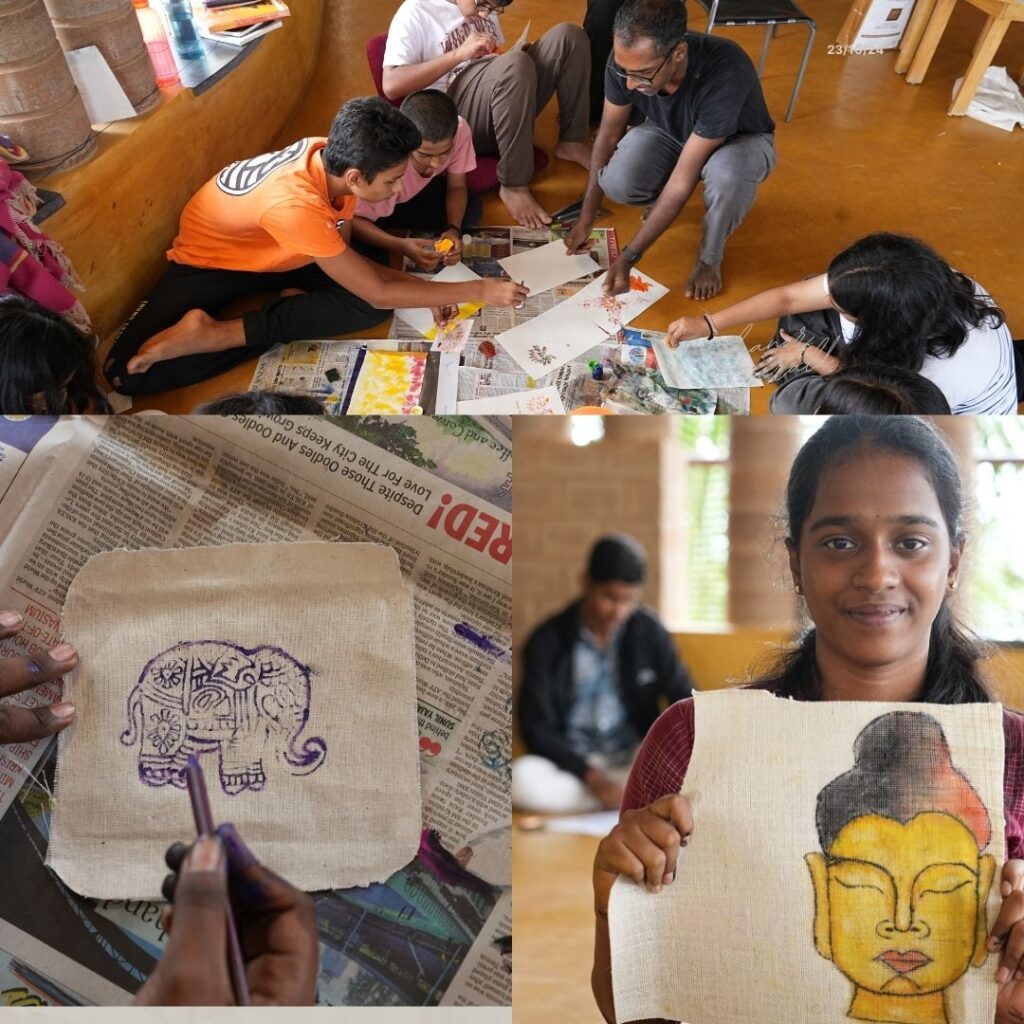
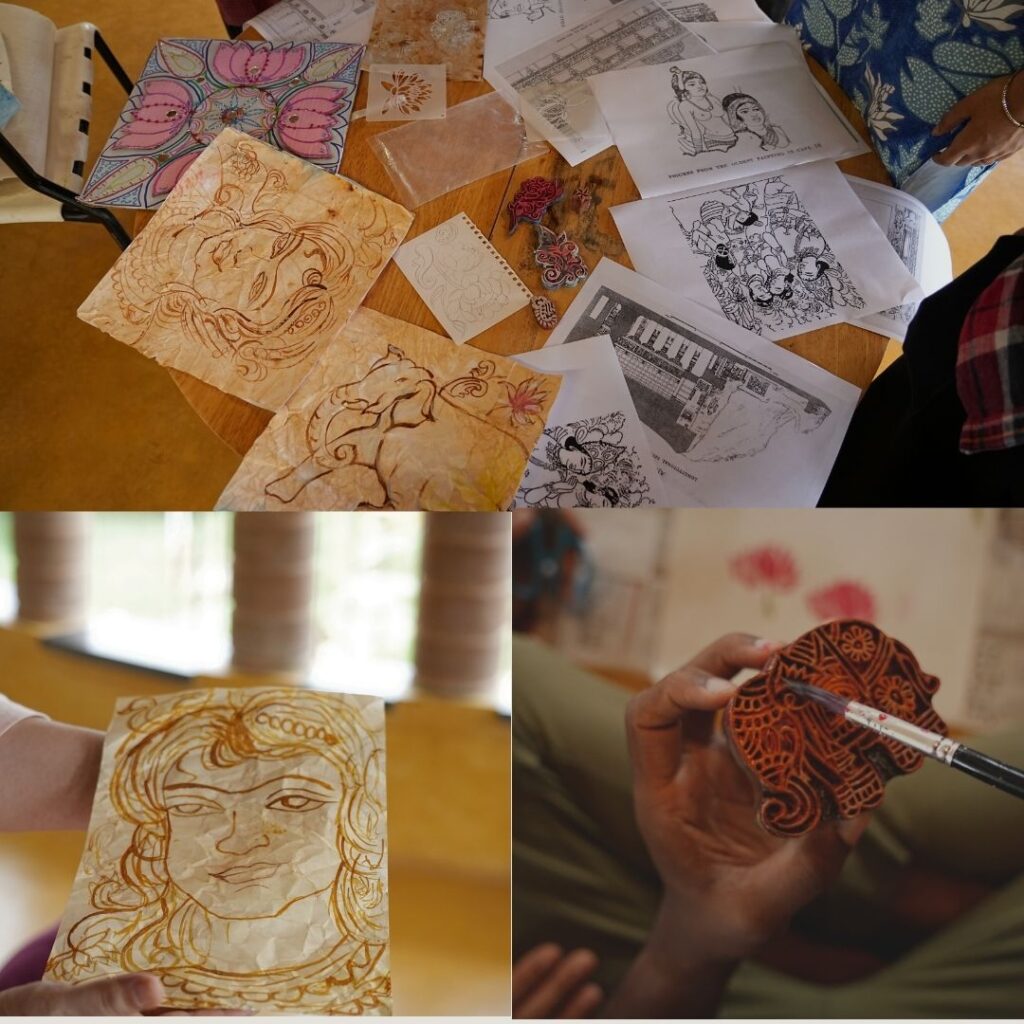
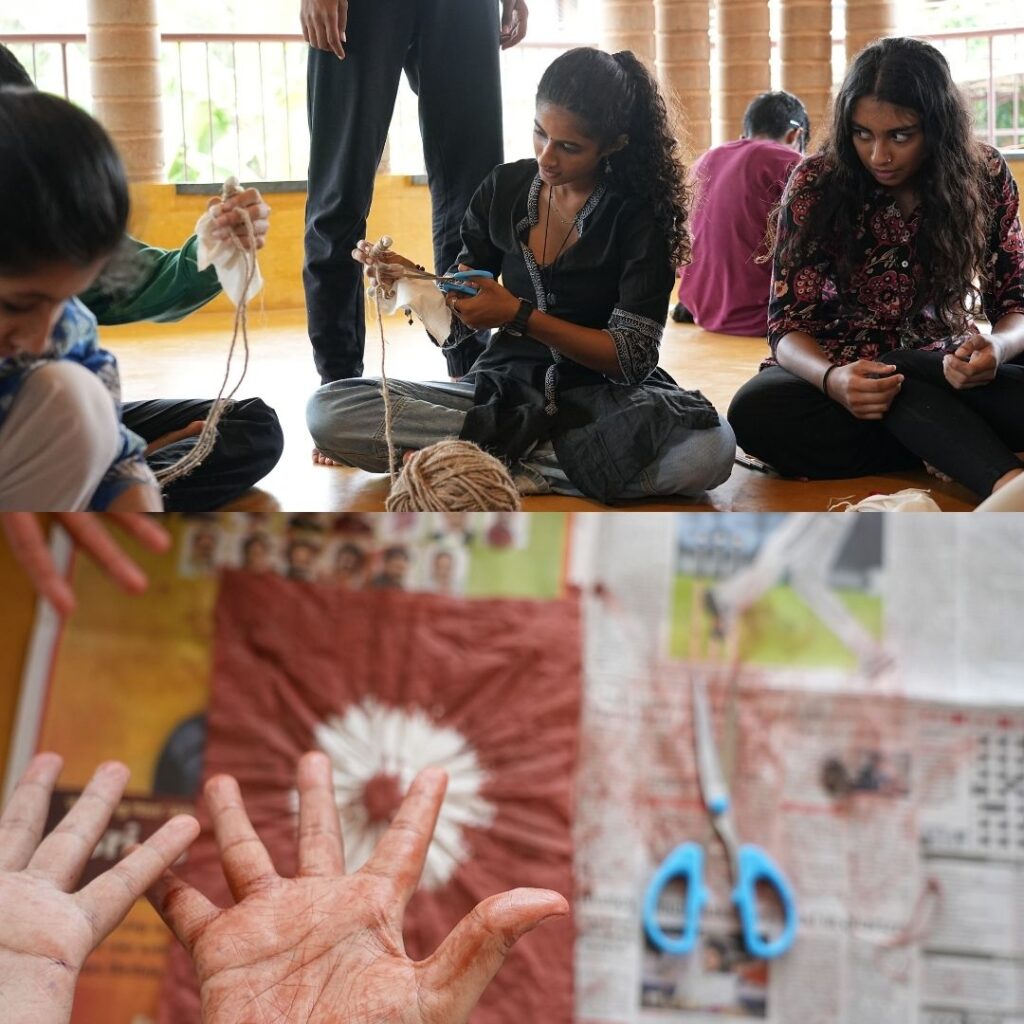
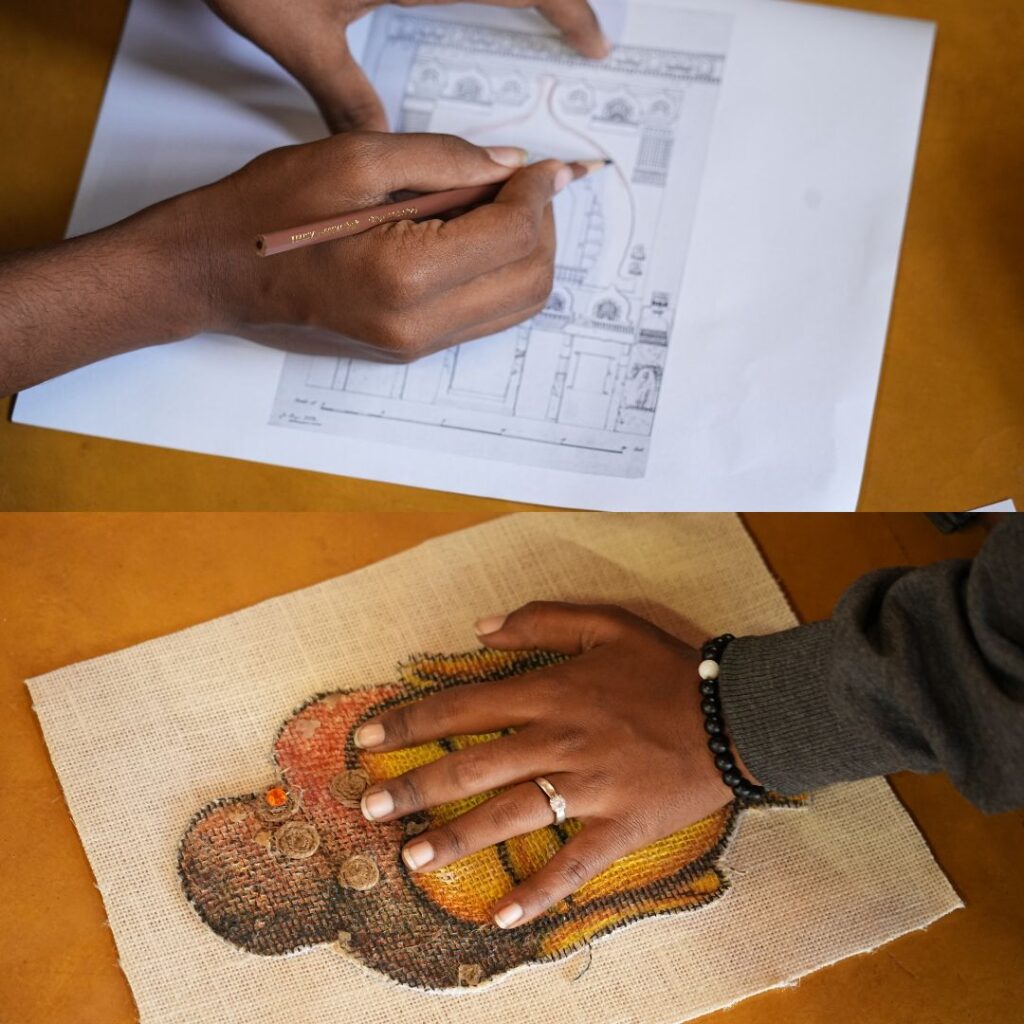
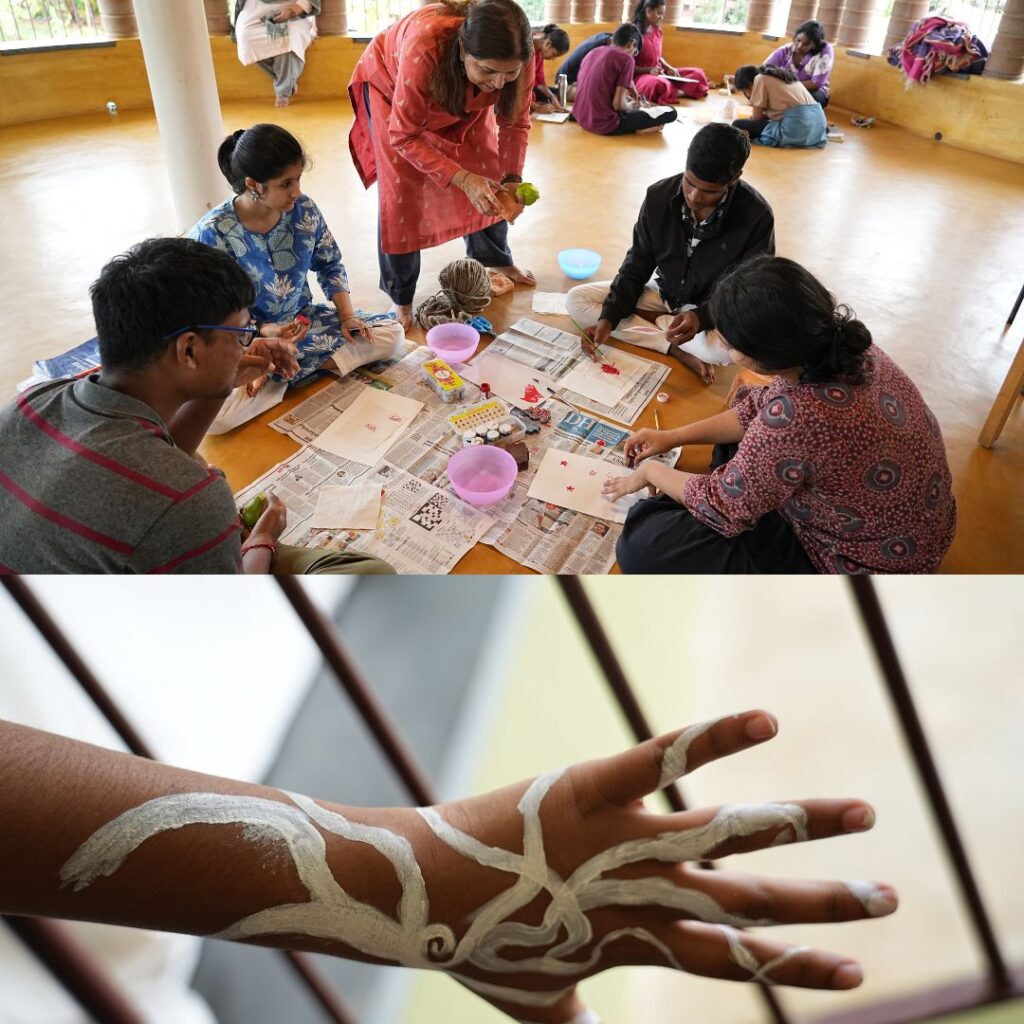
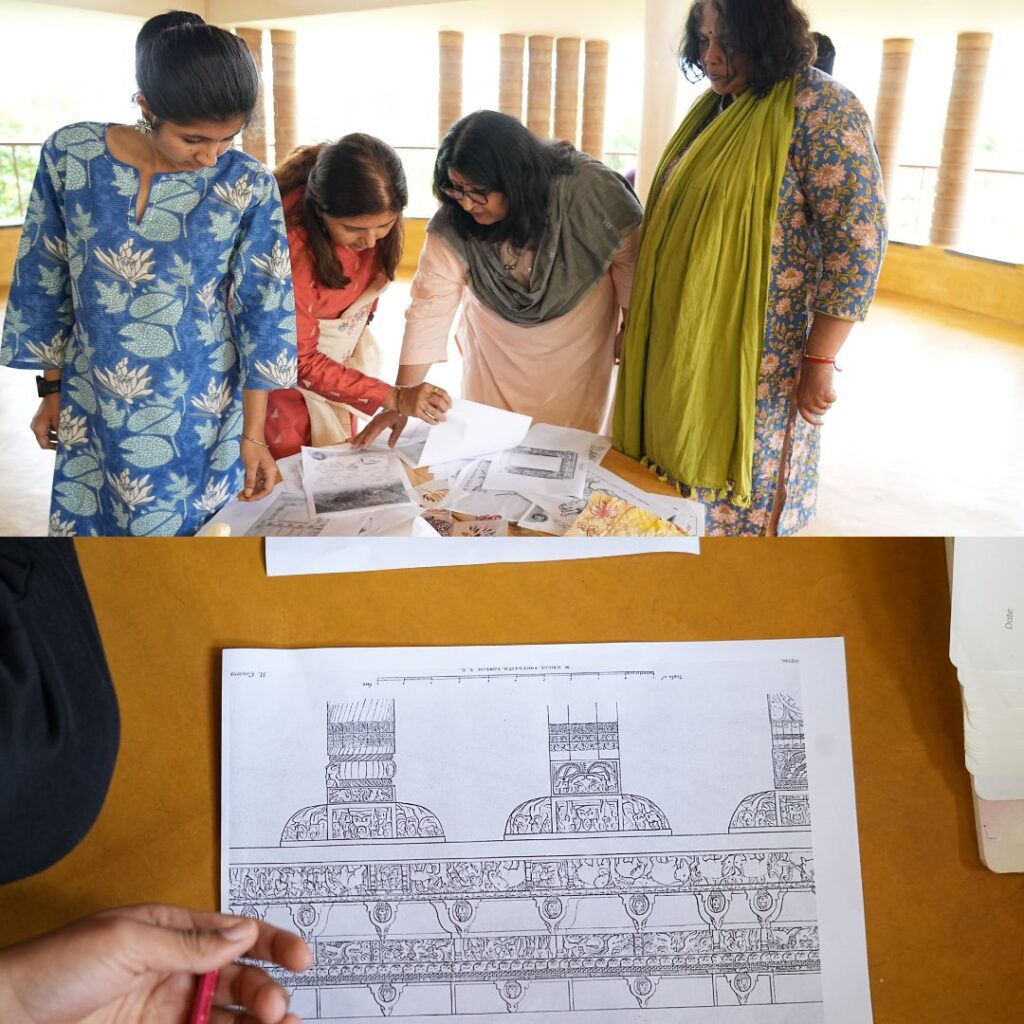

Many students spoke highly of the hands-on experience they had in creating art projects inspired by Ajanta, this they said gave them a deep appreciation of how much sincere effort and precision are needed to create beautiful art, and this helped them become more conscious of the need to preserve our artistic heritage. Some of the students also reflected on what art and aesthetic development can mean for self-development. Students who were particularly drawn to science subjects found the whole immersion into Art experience highly engaging as they also understood that in Indian vision of knowledge and learning, art was not considered totally separate from science, and all knowledge is considered originating from one source. Looking at some of the architectural details at Ajanta and Ellora they marvelled at how science and art came so beautifully together in these massive works. Overall the workshop experience was an engaging learning experience for all the participants.
